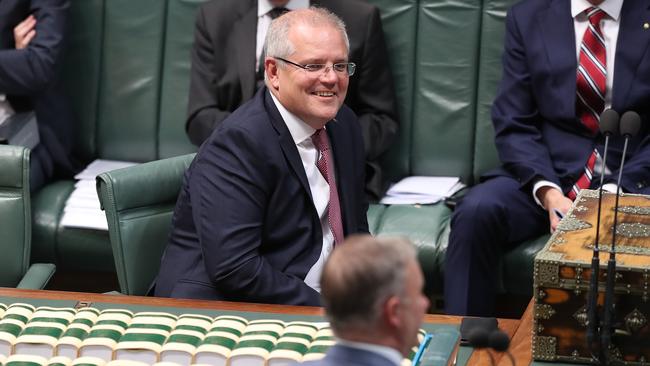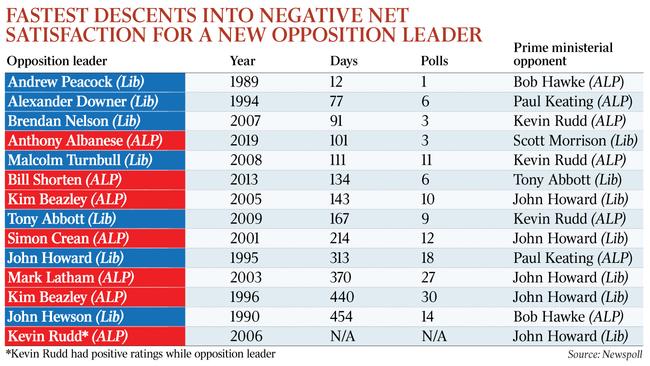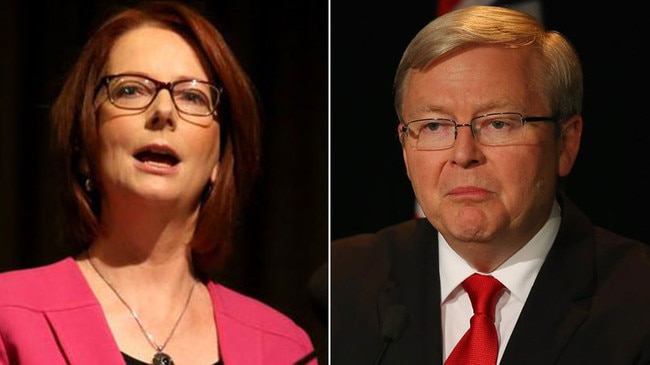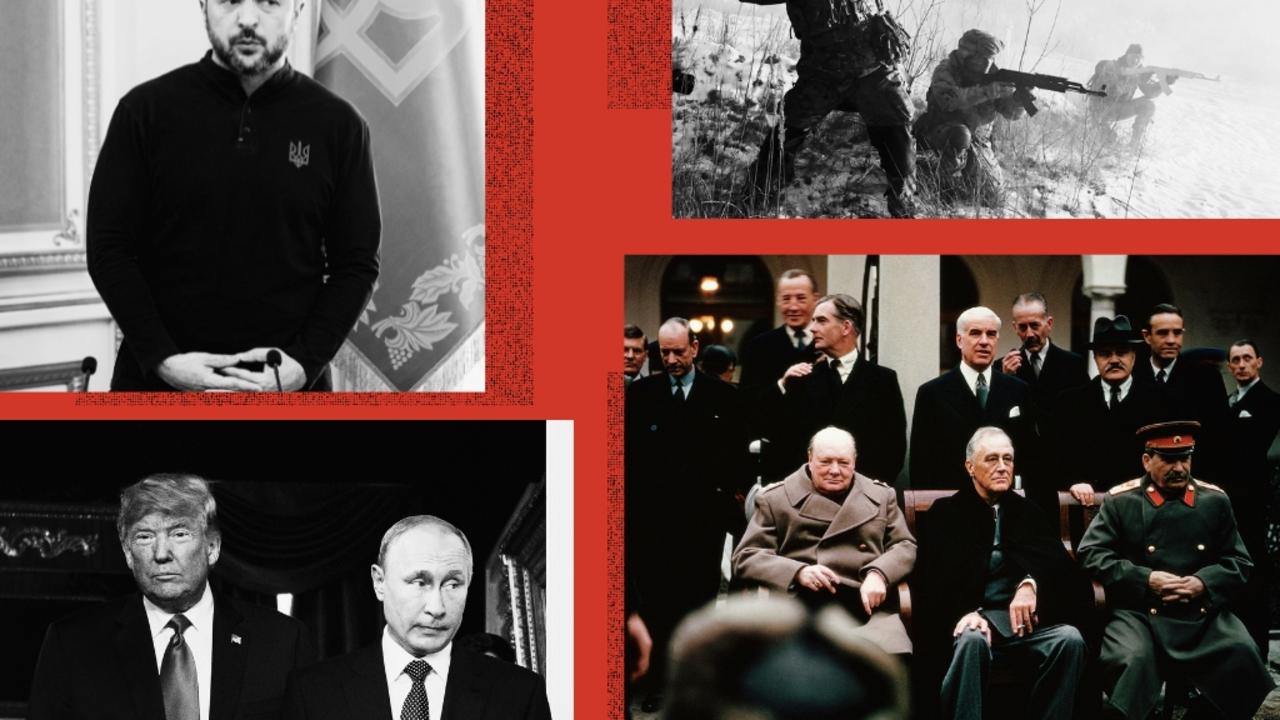Era of unpopular leadership appears to finally be behind us

The era of unpopular leadership appears to finally be behind us. The latest Newspoll has Scott Morrison’s net satisfaction rating at positive 10, up from positive six in the previous poll.
While Anthony Albanese’s rating is at negative five, and down from positive seven at the previous poll, that’s still not too bad for an opposition leader.
However, the speed of Albanese’s descent may worry Labor strategists. After just 101 days in the job and after a mere three Newspolls, he has chalked up a negative rating, faster than any previous Labor opposition leader since Newspoll began. Even Bill Shorten took six polls and 134 days to do so.

Only three opposition leaders have moved into negative net satisfaction rating territory quicker than Albanese: all Liberals. Brendan Nelson took 91 days and three polls, Alexander Downer took 77 days and six polls, while Andrew Peacock’s second stint as leader in 1989 holds the record as the fastest to hit negarive numbers: in his first Newspoll just 12 days into the job.
Of course what really gets opposition leaders into trouble is if their personal numbers continue to head south, rather than hovering in the single digit range for negative net satisfaction ratings.
If Albanese’s numbers do continue to slide south, he’ll be grateful for the rules Kevin Rudd brought in protecting leaders from being challenged. Those same rules prevented Labor replacing Bill Shorten in the lead up to the May election — which almost certainly would have ensured a Labor victory.
Ever since Rudd’s love affair with the Australian people ended a few short years into his prime ministership, Australians have gotten used to unpopular leadership.

Beyond the briefest of honeymoons, Julia Gillard and Tony Abbott were perennially unpopular. Relative to this pair Malcolm Turnbull was popular, but not really. His net satisfaction rating was always negative, it’s just that we knew his party was even more unpopular than he was, as was Shorten.
Morrison appears set to break the trend. While we need to be careful not to assume his popularity will outlive his post election honeymoon, the signs are that is exactly what’s going to happen.
But the government can’t let the growing popularity of its PM distract from the continuing closeness of the two party figures. A 51-49 per cent lead is slender. Holding just 77 of the 151 House of Representatives seats is a narrow majority. And beyond Morrison few in Coalition ranks would be regarded as popular.
Throw in that the Coalition is in its third term and there are no guarantees of political longevity for this government — even if the smart money is on it cementing its lead rather than withering away.
With the election less than four months in the rear view mirror, Labor isn’t even trying to be electorally competitive at this point in the cycle. It must review what went wrong, bed down the new hierarchy, and decide what to keep and what to throw away amongst the policies to took to the last election.
This will all take time. In the meantime Morrison and the Coalition will largely be judged independently of the Opposition. Only after we hear Albanese’s first budget in reply speech next May will the contest in Canberra re-emerge as a two horse race.
Peter van Onselen is a professor of politics at the University of Western Australia and Griffith University.


